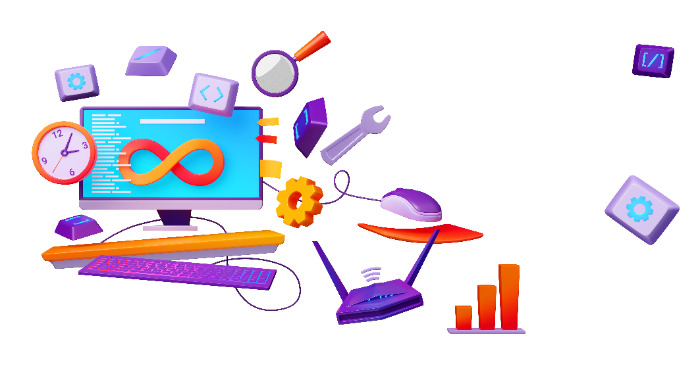From Tools to Culture: How DevOps is Revolutionizing Business Practices
DevOps: What is it?
DevOps, to put it simply, is about breaking down the boundaries that have historically existed between development and operations teams. Development and operations teams collaborate across the whole software application life cycle, from development and testing to deployment and operations, when using a DevOps paradigm.
Benefits of DevOps
· Speed. Using DevOps methods enables you to innovate more quickly, adjust to shifting market conditions more effectively, and increase the efficiency with which you can achieve your objectives.
· Rapid delivery. Increasing the frequency of releases allows you to improve your product faster and build competitive advantage.
· Reliability. Continuous integration and delivery, two DevOps methods, can guarantee the quality of infrastructure modifications and application upgrades, enabling you to deliver more frequently and with more reliability while preserving the best possible end user experience.
· Improved collaboration. Developers and operations teams work together closely, share responsibilities, and integrate workflows in a DevOps approach. Time is saved and inefficiencies are decreased.
· Security. By utilizing automated, integrated security testing technologies, you may implement a DevOps approach without compromising security.
How to find the right DevOps tools
In order to enable teams to develop and deliver quickly and dependably for their clients, DevOps processes rely on powerful technologies. These technologies ought to keep engineers in charge of the fast-paced pace, automate tedious jobs, and assist teams in managing complicated environments at scale.
The phases that make up the DevOps workflow are:
Planning the next iteration of the product’s development
Building the code
Testing and deploying to the production environment
Delivering product updates
Monitoring and logging software performance
Gathering customer feedback
Planning. To make sure the DevOps team is aware of the tasks at hand, what is being done, and whether there is a chance of falling behind schedule, schedule planning and task tracking tools are required. Confluence and Jira are two examples of tools that enable DevOps teams accomplish a smooth and effective project management cycle and guarantee on-time product delivery.
Build and delivery. When something goes wrong, developers need to be able to quickly deploy development and testing environments and are impatient with waiting for fixes. Docker containerization offers repeatable development, build, test, and production environments while guaranteeing consistency across various development and release cycles. For this stage, Kubernetes, Terraform, Chef, Ansible, and Puppet are other often used tools.
Testing. Seek for solutions like Jenkins, CircleCI, and GitLab CI that reduce testing time and effort without sacrificing user experience or code quality.
Software monitoring and logging. Software needs to be checked after it is put into production to guarantee consistent performance and higher customer satisfaction. In addition, performance analysis and logging, smart alerts on a range of issues, client feedback collection, and other tasks are included in this stage. Tools for performing these tasks include Prometheus, Grafana, Elastic (ELK) Stack, Splunk, and Sumo Logic.
DevOps Lifecycle
DevOps can be implemented in 3 phases:
Phase 1: Automated Testing
Phase 2: Continuous Integration
Phase 3: Continuous Delivery
1. Automated Testing
The cornerstones of DevOps proficiency are automated testing and the agile methodology. This required developing tests inside the code so that each code modification could be assessed based on whether the test passed or failed.
2. Continuous Integration
All of the testing is automated after we have sufficient code coverage for testing. One of the most often utilized technologies for continuous integration implementation is Jenkins. Several servers are used in the background to test the code and make sure it goes through all feasible iterations to see if any bugs can be found. After that process, Jenkins will then produce a report with information like the code coverage and succeeded or failed tests.
3. Continuous delivery
The true business value is found at this phase. Writing code in manageable chunks—such as new features or bug fixes—that are then merged, tested, watched over, and released makes up the foundation.
Every firm has a unique pipeline and set of technologies for continuous delivery and deployment. A pipeline is conceptualized as a sequence of steps, each supported by a particular tool. Let's examine the six essential stages of continuous delivery and the related tooling.
The key areas are: Version Control, Continuous Integration Systems, Build, and testing, you’ll need an Artifact repository such as (AWS S3, CloudRepo, Nexus, Artifactory, or Docker Hub) and Deployment. Using version control (example: Git, SVN, etc.) and source code management (example: GitHub, Bitbucket, Subversion, Mercurial, CodeCommit, etc.), we commit code changes and can view the entire history of all changes ever made.





Comments